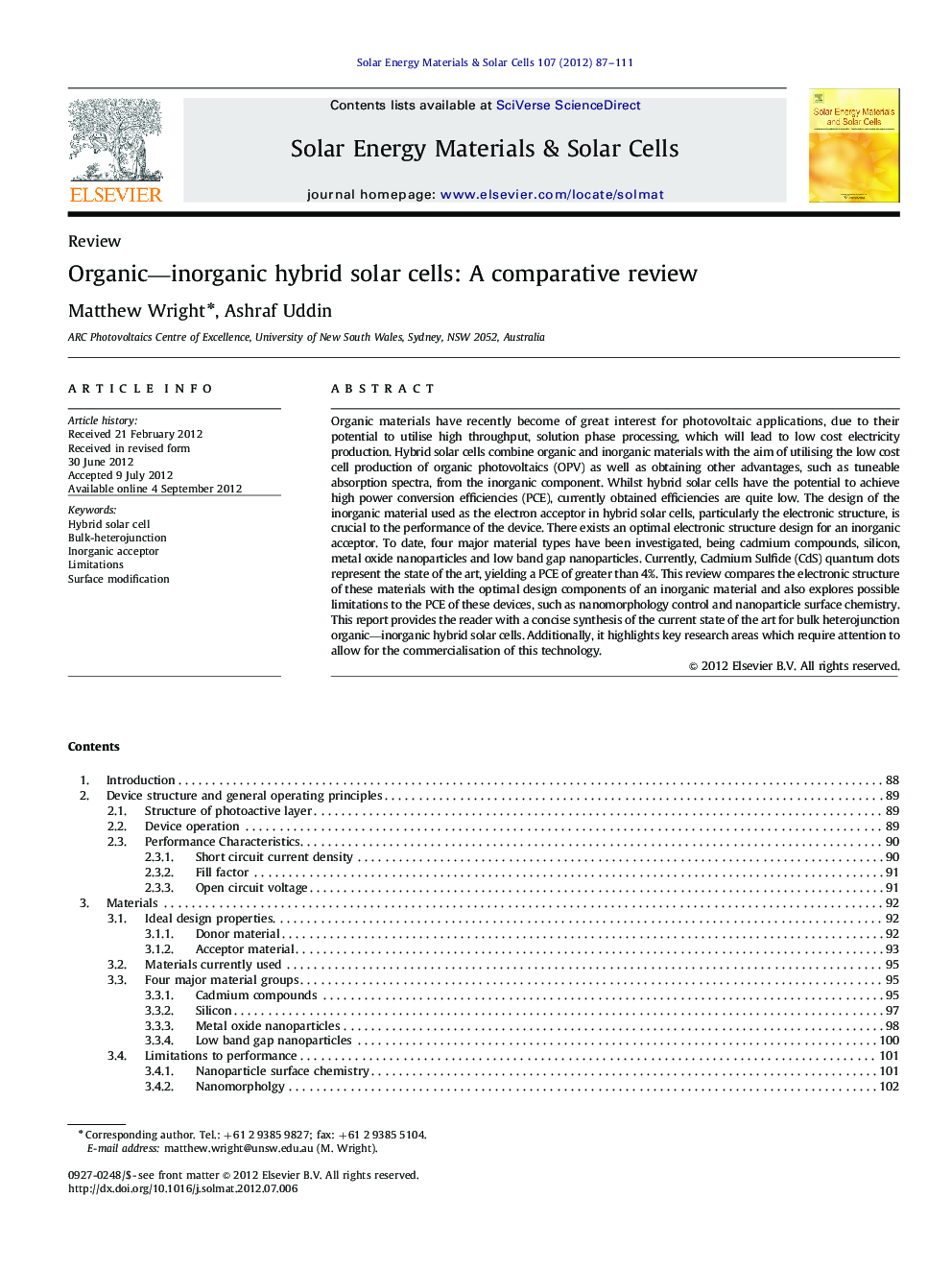| کد مقاله | کد نشریه | سال انتشار | مقاله انگلیسی | نسخه تمام متن |
|---|---|---|---|---|
| 78897 | 49344 | 2012 | 25 صفحه PDF | دانلود رایگان |

Organic materials have recently become of great interest for photovoltaic applications, due to their potential to utilise high throughput, solution phase processing, which will lead to low cost electricity production. Hybrid solar cells combine organic and inorganic materials with the aim of utilising the low cost cell production of organic photovoltaics (OPV) as well as obtaining other advantages, such as tuneable absorption spectra, from the inorganic component. Whilst hybrid solar cells have the potential to achieve high power conversion efficiencies (PCE), currently obtained efficiencies are quite low. The design of the inorganic material used as the electron acceptor in hybrid solar cells, particularly the electronic structure, is crucial to the performance of the device. There exists an optimal electronic structure design for an inorganic acceptor. To date, four major material types have been investigated, being cadmium compounds, silicon, metal oxide nanoparticles and low band gap nanoparticles. Currently, Cadmium Sulfide (CdS) quantum dots represent the state of the art, yielding a PCE of greater than 4%. This review compares the electronic structure of these materials with the optimal design components of an inorganic material and also explores possible limitations to the PCE of these devices, such as nanomorphology control and nanoparticle surface chemistry. This report provides the reader with a concise synthesis of the current state of the art for bulk heterojunction organic—inorganic hybrid solar cells. Additionally, it highlights key research areas which require attention to allow for the commercialisation of this technology.
► Hybrid solar cells combine both organic and inorganic materials.
► Different possible inorganic acceptor materials compared.
► Electronic structure of heterojunction heavily influences device performance.
► Major limitation of inorganic nanoparticles related to surface chemistry.
► New characterisation techniques help understand fundamental processes.
Journal: Solar Energy Materials and Solar Cells - Volume 107, December 2012, Pages 87–111